Average sizes and life expectancy for this breed:
The European Burmese is a very loving, intelligent, and playful cat breed. They thrive on human companionship and will want to participate in everything you do! Alongside their cousins; the American Burmese, European Burmese cats are famed for being very dog-like. Instead of shying away from strangers, these cats will walk straight up to them for a fuss.
Expect these cats to always want to be on your lap or play interactive games, such as fetch, with the family. They also tend to get along well with cat-friendly dogs and other cats. Both the American and European Burmese are very similar in temperament. They are playful and curious right into adulthood. They are also very skilled climbers, so no furniture is out of reach for these confident kitties.
The differences between the two breeds can be seen in their appearance. Perhaps the most easily identifiable difference is the eyes. European Burmese have slanted eyes with the top line of the eyes being completely straight. American Burmese have large, fully rounded eyes. In fact, the whole body of the American Burmese is rounded, with soft contours, full cheeks, and ears that are rounded at the tips. European Burmese are much more slender and oriental looking. These cats have slim, straight legs, a chiseled wedge-shaped face, and erect, wide-set ears. Both the European and American Burmese are great choices if you don't mind a complete lack of privacy. These cats are devoted to their owners and will want to be a part of everything you do, from checking your email on the computer to preparing meals and watching television.
Overall, the European Burmese is a stunning, slender, but muscular cat with an endearing frown-like expression. They are an excellent choice for busy households that enjoy the constant attention of an affectionate feline companion.
See available kittens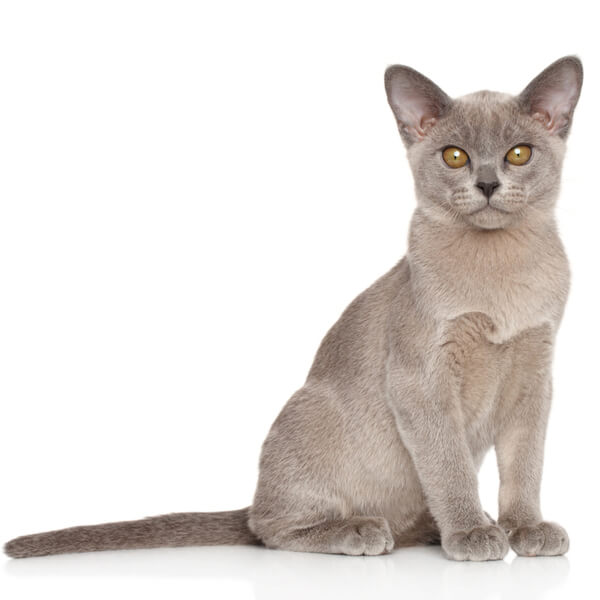

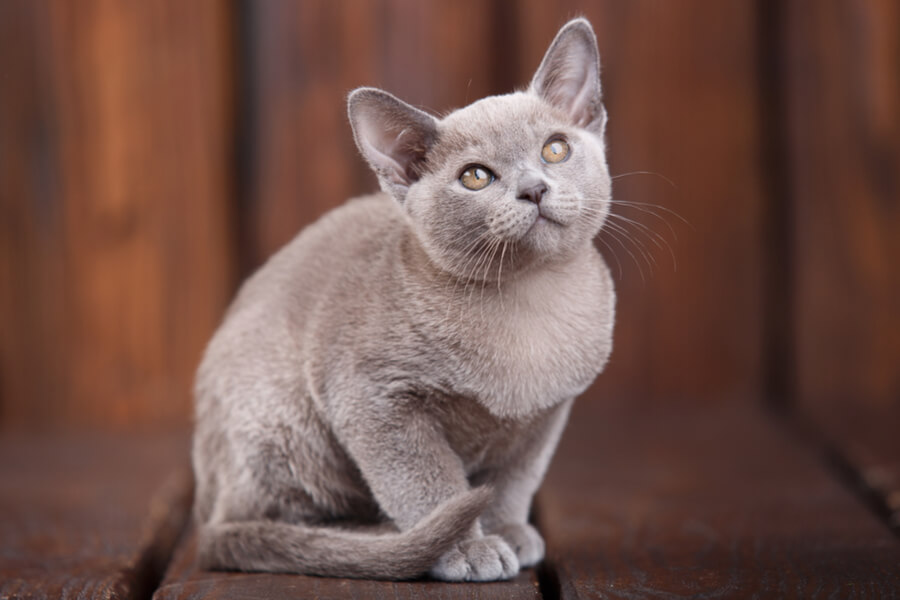


Burmese cats have been known to roam Burma, Thailand, and Malaya for centuries. However, the European Burmese and the American Burmese we know today, both originated from the same source – a cat named Wong Mau. She was the first Burmese introduced to America by Dr. Joseph Thompson in 1930. When she arrived, many cat fanciers presumed that she was just a very dark Siamese cat. However, Dr. Joseph Thompson was unconvinced. So, he started to breed Wong Mau to identify what breed she was.
When she was bred with a Siamese cat, Wong Mau's resulting litter appeared to be Burmese/Siamese hybrids, as well as pure Siamese cats. When the cats that looked like Burmese/Siamese hybrids were bred with each other, they produced deep, dark Burmese litters. The darker coloured Burmese cats then bred true, showing that Wong Mau was, indeed, a hybrid of the Siamese cats and a dark-coloured unknown cat.
Over the following years, confusion remained about the Burmese breed which led to a number of hybrids being shown. This eventually led to the removal of the Burmese as a registered breed in America in 1947. They were not reinstated until 1953 when the Burmese Cat Society of America got the situation back under control.
The first Burmese to be exported to the UK was in 1949. From then on, the European Burmese breed followed various courses of development, separate from the American Burmese Breed. They were officially recognised as a separate breed in the UK in 1994. Now, we have two very distinctive looking cats with two different standards, that both share a common ancestry.
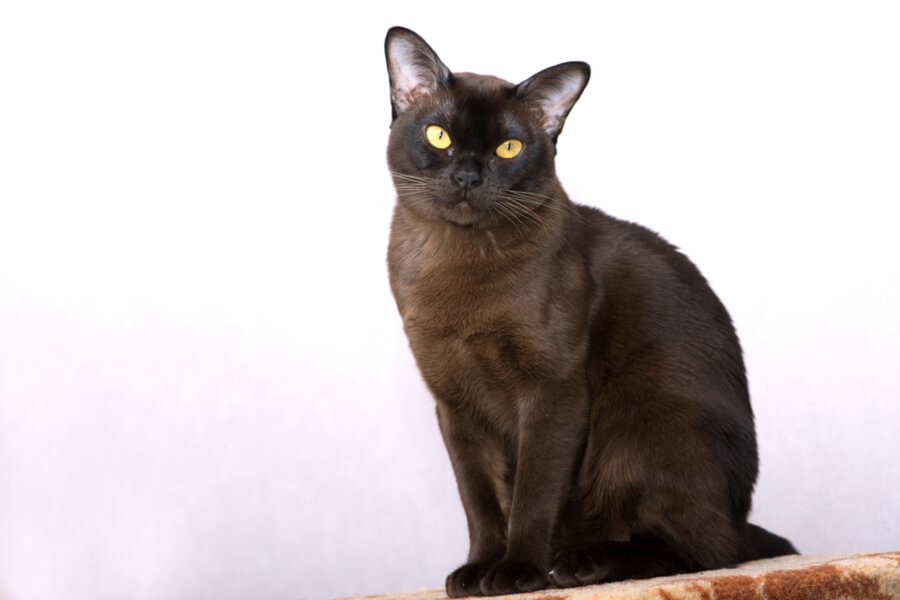
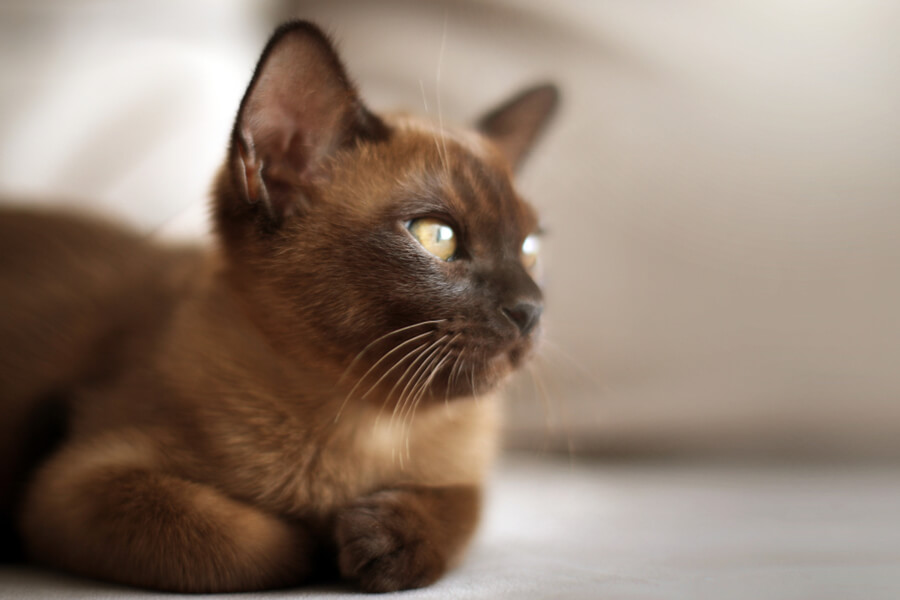
European Burmese are medium-sized, muscular cats that are much heavier than they appear. Compared to their American counterparts, the European Burmese has a more sleek appearance. The top of their head is somewhat rounded, with ample spacing between the ears and wide cheekbones that taper to a short, rounded wedge. Their eyes, which range from yellow to amber, slant more to their nose and have a less rounded opening than the American Burmese eyes. The medium-sized ears of the European Burmese tilt slightly forward and the external lines of the ears continue down the cheek lines. Their slender legs boast small, oval paws. They also have a medium-length tail that tapers a little to a rounded tip.
Both the American and the European Burmese breeds have short, lustrous coats that come in a variety of colours. Only four colours are accepted under the American Burmese Breed standard; sable, blue, champagne, and platinum. However, the European breed comes in ten different colours: Brown, Chocolate, Red, Blue, Cream, Lilac, Brown tortoise, Chocolate tortoise, Blue tortoise and Lilac tortoiseshell.
The coat colours shade slowly to the roots, with the underside of the body often being a little lighter than the top. The red European Burmese has a warm orange apricot shade and may have small tabby markings on the face. Cream-coloured cats may also have slight small markings, with pink nose leathers and paw pads. The lilac coat colour is similar to the platinum coat of the American Burmese. Chocolate is a warm milk-chocolate colour, and brown is a rich, warm, seal brown. The tortoiseshells have patches of colour over the entire body.
When it comes to their personalities, European Burmese and American Burmese cats are in alignment. Both breeds are lively and highly social. They have the charm and willpower of their Siamese ancestors and they love a good conversation too. However, their voices are much softer than the Siamese. Burmese cats are highly intelligent and seek human companionship constantly. They will happily follow you from room to room looking for attention. For this reason, they are not best suited to homes where no one is around for most of the day. Having a second pet is also an option as long as they get along well and have been introduced slowly.
European Burmese are just as inquisitive as their American Burmese counterparts. Expect this cat breed to explore your home and know all of its corners and crevices. This curiosity can sometimes get them into mischief so you will want to keep an eye on them!
Tease their bright minds with numerous interactive toys, and teach them tricks that they can show off to an audience. Clicker training works very well with this breed. Both European and American Burmese remain playful throughout their lives.
The European Burmese is an exceptional choice for people who are looking for a completely devoted companion. These cats will want to be involved in everything you do, whether that's cooking in the kitchen or going to the bathroom. They will also want to sleep on the bed with you and may even snuggle under the sheets.
A female European Burmese is the epitome of queenliness. They love attention and will expect to be waited on hand and foot! Male European Burmese on the other hand, are calmer and content with being lapcats.
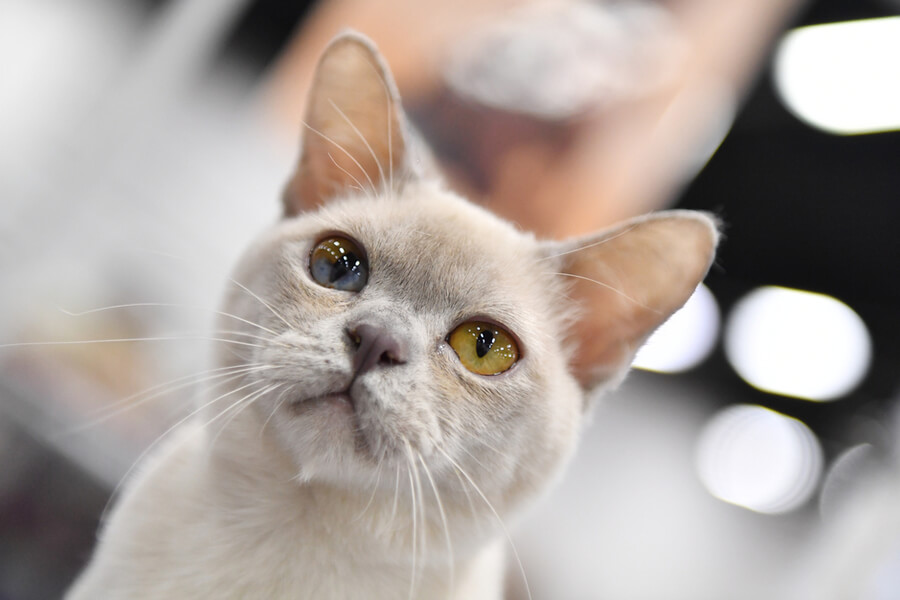
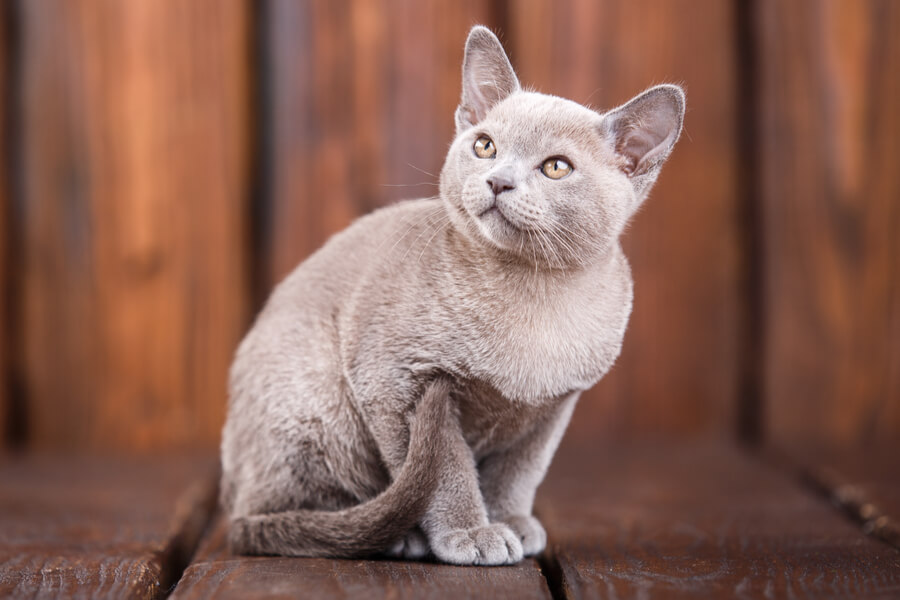
If a European Burmese has been appropriately socialized and trained from an early age, it will grow up to be a good-natured, well-mannered, and affectionate cat. These welcoming felines form strong bonds with their owners and even enjoy receiving fuss from strangers. In fact, they have been known to stop playing for a short moment just to see if someone is watching them!
European Burmese are highly intelligent and adore the love and attention that comes from being clicker-trained. Challenge their bright minds and keep them alert by teaching them commands, games, and tricks. You can also give them a variety of puzzles and interactive toys to play with. Just make sure to reward them when they get it right!
These cats are much more predisposed to enjoy games compared to other cat breeds. They will happily learn how to play fetch, tag, or hide and seek with you! Burmese are also known to have high prey drives, so any toy that has feathers or a tail will be very much appreciated!
Because of their highly social natures, Burmese cats should be indoors only. These cats love people so much that they will happily wander up to any stranger which can get them into trouble. If your little feline is desperate to explore the outdoors, consider leash training or building a catio. Many Burmese cats will accept a lead and harness if appropriately trained.
The European Burmese has a smooth short coat with a very sparse undercoat. A quick brush once a week will keep their fur in tip-top condition and remove any dead, loose hairs. However, don't be afraid to have longer brushing sessions if your Burmese is loving the attention! These cats are generally highly compliant when it comes to grooming. Alternatively, you can use a chamois cloth which will bring out the shine in the coat. Bathing is not needed unless they get dirty or muddy.
Daily dental hygiene is the best approach to prevent tooth decay and gum disease. However, twice weekly brushing is still sufficient. You should also trim their nails twice a month or as needed.
For their eyes, wipe the corners with a soft, damp cloth to eliminate any eye discharge. Make sure to use a separate part of the damp cloth for each eye to avoid the risk of spreading any eye infection. Regular eye discharge should be checked out by a vet, so should any redness or swelling in or around the eyes.
Check your cat's ears weekly. If the ears look dirty, wipe them out with a cotton ball or soft damp cloth moistened with a vet-approved ear cleaner. If the ear has a foul odour, it's best to contact your vet because this can indicate an infection. Other symptoms include swelling, redness and unusual discharge,
Regardless of breed, cat litter boxes should always be clean as these animals are very picky about bathroom hygiene. If it's left dirty, they tend to use other places in the home to do their business.
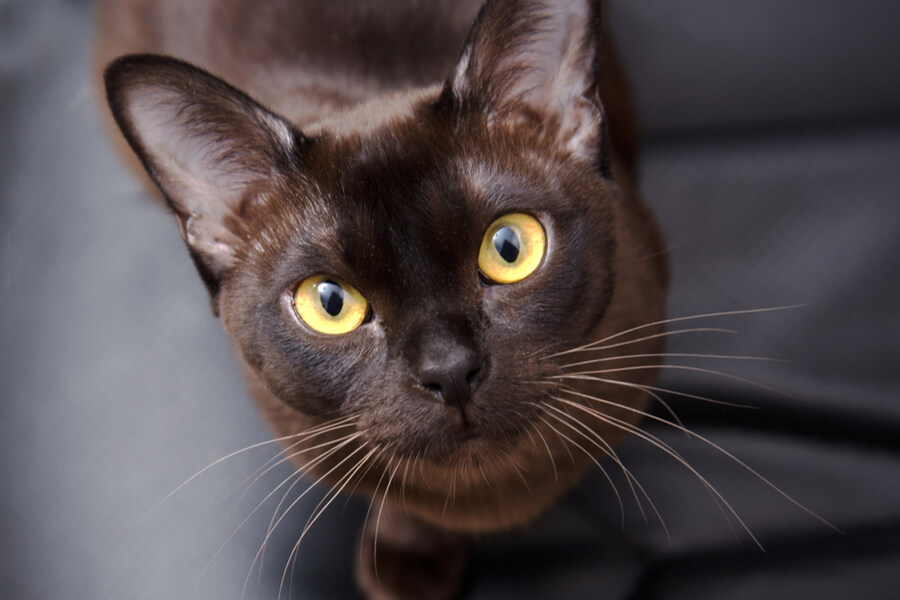
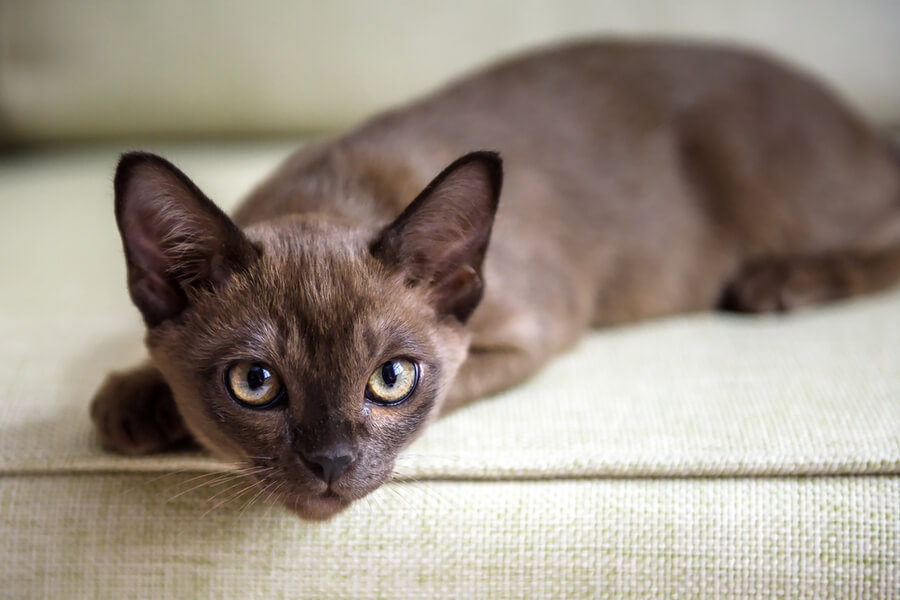
European Burmese are generally a very healthy cat breed. Their life expectancy is 10-15 years with proper care, exercise, and a high-quality diet. However, there are health conditions that a Burmese is prone to. Always ensure you purchase any kitten or puppy from a reputable breeder to ensure they have been well cared for. A breeder will also be able to perform DNA tests on your new family addition to check for any underlying health conditions.
Some of the health issues commonly seen in European Burmese cats include:
The outgoing and laidback European Burmese enjoys playing with people of all ages. This makes them an exceptional choice for families with children. However, you should always supervise younger kids to avoid accidents. It's also a good idea to teach your children how to appropriately approach, fuss, and handle a cat to prevent any unwanted tail pulling or rough handling.
European Burmese generally get along very well with other cats and cat-friendly dogs. However, they can become jealous of the attention given to other animals. Two Burmese together is your best bet.
Always introduce new pets gradually and in controlled environments to ensure they get along.
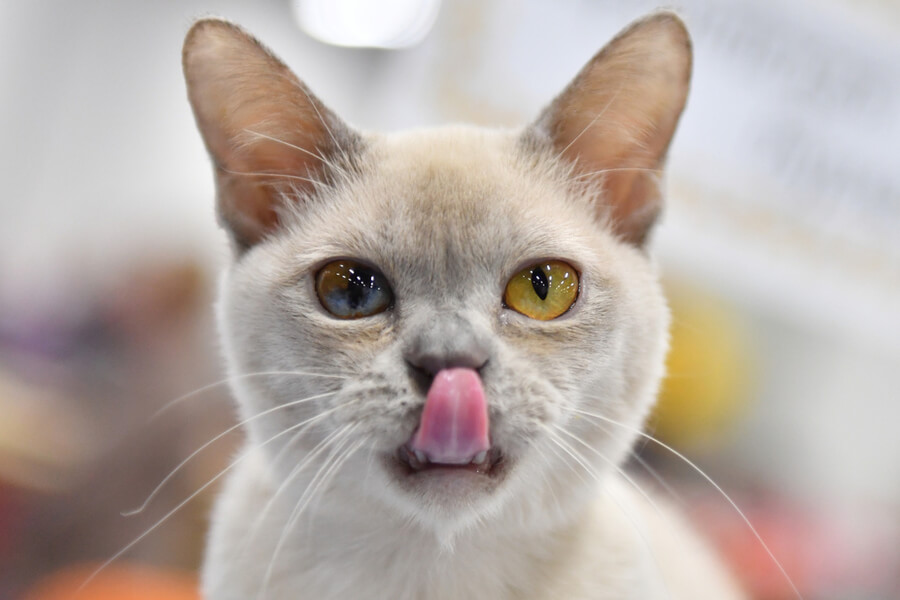

We can connect you with Breeders that are specialized in this particular breed.
See available kittens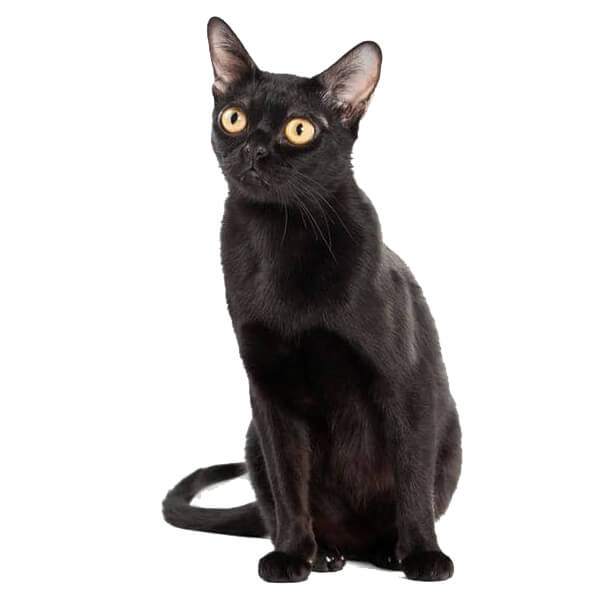
United States of America
Size : Medium
Coat : Short
Registration : GCCF, TICA, CFA, FIFe
Vocality : Medium
Hypoallergenic : No
Grooming : Once a Week
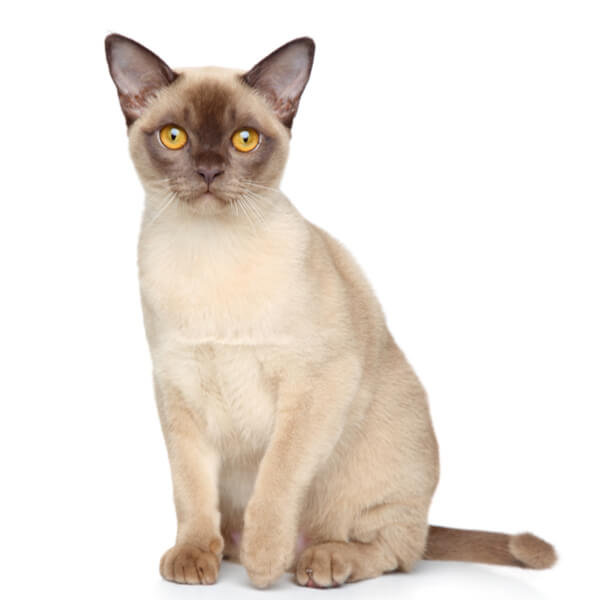
Myanmar
Size : Medium
Coat : Short
Registration : TICA, CFA, FIFe
Vocality : Medium
Hypoallergenic : Yes
Grooming : Once a Week
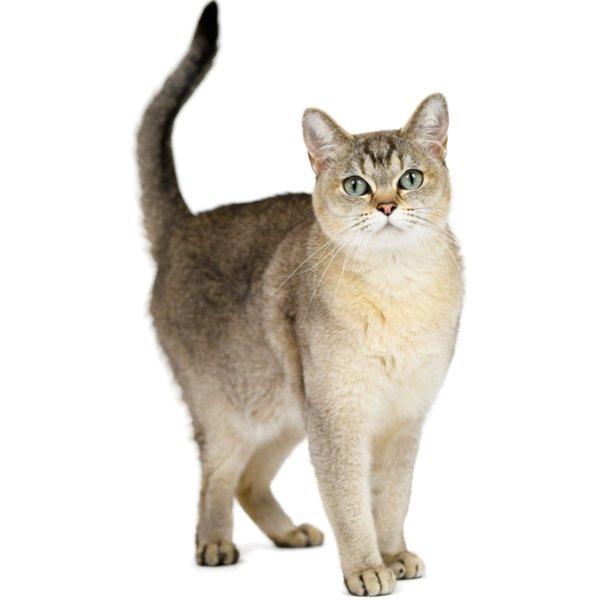
United Kingdom
Size : Medium
Coat : Short
Registration : GCCF, TICA, CFA, FIFe
Vocality : Low
Hypoallergenic : No
Grooming : Once a Week
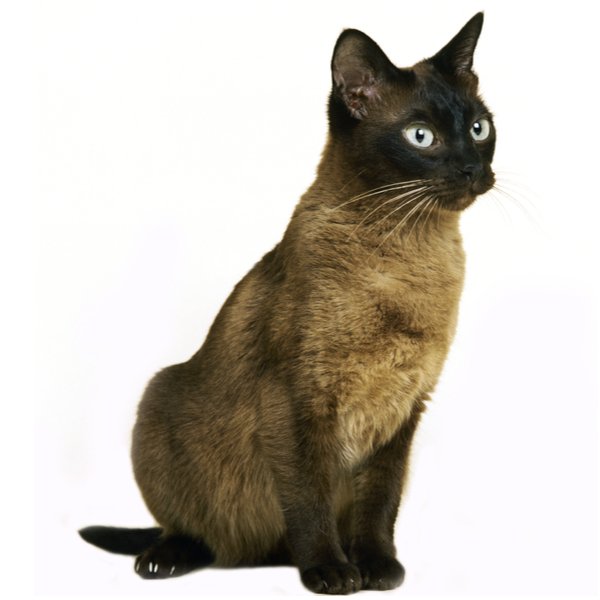
Thailand
Size : Small
Coat : Short
Registration : GCCF, TICA, CFA, FIFe
Vocality : High
Hypoallergenic : No
Grooming : Once a Week


Need some advice?
Whether you're a first time pet owner, an experienced pet owner, a new or long-time breeder, or just curious about pets, we've got you covered!

January 17, 2024
What Is The Personality Of Russian Blue Cats?
Russian Blue cats are most known for their distinctive shimmery blue-silver coat and piercing green eyes. However, this breed’s calm and gentle temperament is what makes them shine the most in the feline world.

January 17, 2024
10 Facts About Russian Blue Cat Breed
Russian Blues are one of the most aesthetically stunning cat breeds, with a gorgeous plush silvery coat and vibrant green eyes. However, it’s not only their appearance that is beautiful; their nature is too.

January 17, 2024
How To Choose The Right Cat Breed for You
Cats can make the most fantastic animal companions; they are adorable, friendly, and loving. However, not all felines are created equal. There are many different breeds, of which each has its unique personality traits.
Need some help?
Contact us to speak to our friendly advisor, who will gladly help you find your dream pet!



We are registered in England and Wales under registration number 12568840,
and our registered office is at 58-60 Kensington Church Street, W8 4DB London, England.
© 2023 The Pedigree Paws